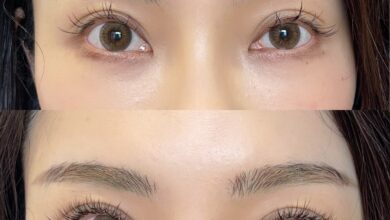Melasma Treatment for Darker Skin: Safe and Effective Solutions
Melasma is a common skin condition that primarily causes dark, discolored patches on the skin, particularly the face. It affects individuals of all skin tones but can be particularly challenging to treat in darker skin. For individuals with a higher level of melanin, the risk of Hyperpigmentation or uneven results is higher if not treated with care. In this article, we will explore safe and effective Melasma treatment options for darker skin, while emphasizing how to achieve a smooth, even-toned complexion.
Understanding Melasma in Darker Skin
Because darker skin types have higher melanin levels, Melasma is more evident in these skin types. Melasma is frequently caused by hormone fluctuations, sun exposure, or skin inflammation. The discolored areas may appear more noticeable as a result of this extra melanin. Making sure that Melasma treatment for darker skin types doesn’t aggravate pigmentation or lead to new problems like post-inflammatory Hyperpigmentation (PIH) is difficult.
The Importance of Sun Protection
Sun protection is one of the most crucial aspects of Melasma treatment. Sunlight’s UV radiation can aggravate Melasma, darkening the affected areas. Darker-skinned people need to be very careful about wearing sunscreen every day, whether inside or in overcast conditions.
Select a broad-spectrum sunscreen that offers protection against UVA and UVB radiation with a minimum SPF of thirty. Furthermore, search for sunscreens that have physical blockers like titanium dioxide or zinc oxide, which are less likely to irritate darker skin types and are mild on them.
Topical Hydroquinone for Melasma
Because hydroquinone lightens the skin’s discolored patches, it is a popular option for treating Melasma. Hydroquinone can be helpful for people with darker complexion, but it must be used carefully. Hydroquinone overuse can exacerbate ochronosis, a disorder that results in blue-black pigmentation on the skin.
Hydroquinone should be used according to a dermatologist’s instructions at all times. For those with darker skin, a low dose of hydroquinone is usually advised; it should only be administered to the Melasma-affected areas, and any side effects should be routinely observed.
Chemical Peels for Darker Skin
Chemical peels can help exfoliate the skin and lessen the look of Melasma, especially light ones like lactic or glycolic acid. However, powerful peels should be avoided on darker skin types since they are more likely to cause post-inflammatory Hyperpigmentation.
The secret is to begin with mild peels under a doctor’s supervision. Over time, a minor chemical peel helps reduce dark spots on the skin by shedding the outer layer of the skin and exposing new skin underneath. Frequent sessions can safely improve Melasma without causing discomfort or additional pigmentation when paired with other treatments.
Retinoids for Melasma
Retinoids, which are a byproduct of vitamin A, can be added to a melasma treatment plan to increase cell turnover. Retinoids can lessen the appearance of Melasma by promoting the skin’s regeneration and shedding of dead cells.
To prevent irritation, it’s advisable to begin with a lower-potency retinoid for people with darker skin. Combining retinoid therapy with sun protection is essential since retinoid therapy can make the skin more susceptible to the sun. Retinoids have the ability to greatly reduce Melasma over time without adding more dark patches.
Vitamin C Serums
Strong antioxidant vitamin C can help brighten the skin and reduce discoloration. It is a great alternative for treating Melasma because it functions by blocking the enzyme that produces melanin.
Vitamin C can be used daily on darker skin to gradually lessen Melasma appearance. In contrast to more aggressive therapies, vitamin C protects the skin from sun-induced free radical damage while still being kind to it.
Microneedling for Melasma
Enhancing skin texture and promoting collagen production can be achieved by microneedling. When done properly, micro-needling might be a safe choice for people with darker skin. Tiny needles are punctured into the skin throughout the process to encourage healing and cell renewal.
In addition to gentle peels or serums, microneedling can help minimize Melasma without exacerbating existing pigmentation problems. However, the surgery needs to be carried out by a specialist who has dealt with darker skin tones before.
Natural Remedies for Melasma
When treating their Melasma, some people opt to use natural therapies. Aloe vera, licorice extract, and turmeric are among the ingredients that have demonstrated promise in lightening pigmentation and calming the skin.
Natural remedies may take longer to show results than conventional treatments, even though they are usually safe for darker skin types. Always conduct a patch test before using natural products, especially if you have sensitive skin.
Laser Treatments: Proceed with Caution
Although laser treatments are frequently thought of as a treatment for Melasma, darker skin types may find them dangerous. While some lasers are useful in treating Melasma, others can worsen the condition by causing Hyperpigmentation.
If you’re thinking about laser therapy, make sure your dermatologist has experience treating Melasma in darker skin types. When addressing pigmentation, specialized lasers like the Q-switched Nd laser may be a safer alternative because they don’t increase inflammation.
Tranexamic Acid for Melasma
An emerging treatment for Melasma is Tranexamic acid, which lowers melanin production. This acid has had encouraging effectiveness in decreasing Melasma in darker skin tones and can be used topically or consumed orally.
Long-term usage of topical Tranexamic acid is thought to be safe, and it may work especially well when paired with other therapies like vitamin C or Retinoids.
Avoiding Irritants
Steering clear of skincare products that can irritate the skin is one of the most crucial parts of treating Melasma in people with darker skin. Products with strong chemicals, alcohol, or smell can exacerbate pigmentation and cause inflammation.
When creating a skincare regimen, use moisturizers and cleansers that are mild and fragrance-free. Remaining relaxed and moisturized on the skin might enhance the efficacy of other therapies.
Post-Treatment Maintenance
Maintenance is essential after Melasma treatment has lessened the appearance of black spots. Sunscreen use regularly is still very important. Furthermore, keeping up with gentle treatments like periodic chemical peels or Vitamin C serums can help stop Melasma from coming back.
The idea is to keep the complexion of darker skin to a neutral state without irritating it. Remain with therapies that have been demonstrated to be effective; do not experiment with harsh or unidentified products.
Consulting a Dermatologist
Seeing a dermatologist is usually the best course of action because Melasma can be obstinate and unpredictable, especially for people with darker skin. A expert can create a personalized treatment plan for Melasma that will guarantee the best possible result while reducing the risk of Hyperpigmentation.
Dermatologists can put together a safe, efficient strategy specific to your skin type by combining treatments including topical medicines, Retinoids, and chemical peels. Regular check-ins with a specialist will also ensure that the medication is working as planned and any adverse effects are treated swiftly.



